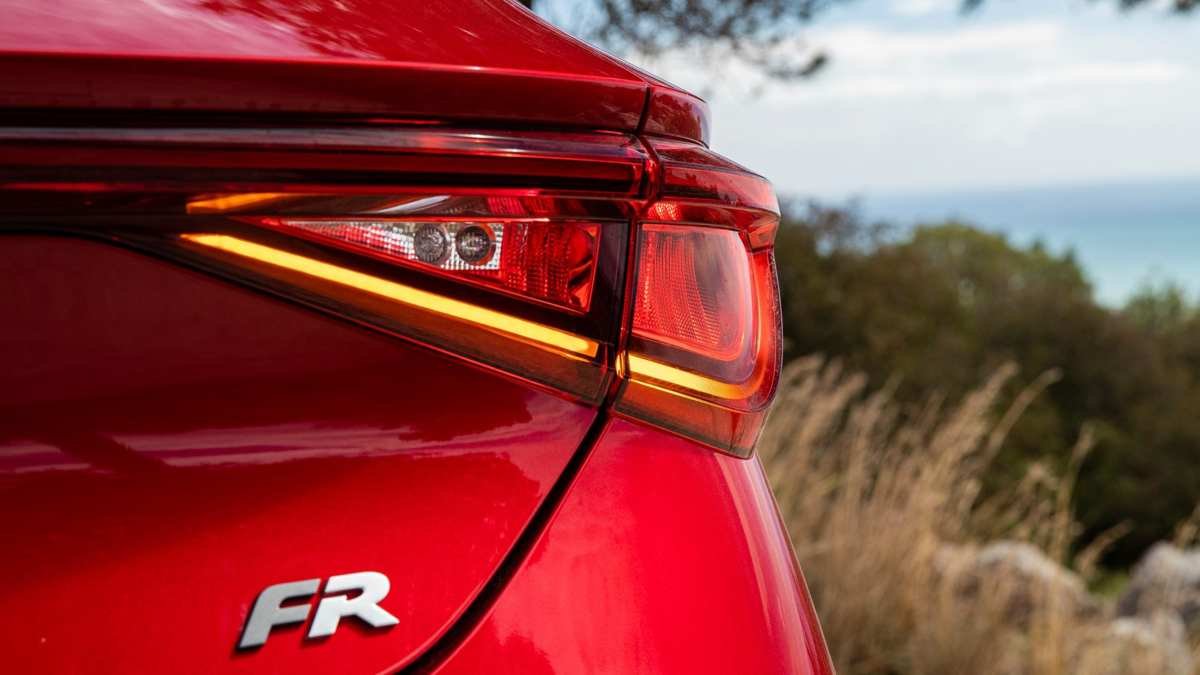Wondering why your turn signal works sometimes but not others? Learn the causes and what you can do to fix them.
Most drivers underestimate the importance of turn signals. Whether you’re changing lanes on the road, turning into a parking lot, or pulling in or out of your driveway, they are essential for letting other motorists know the direction you want to go so that they can maneuver appropriately.
These underappreciated devices are, in fact, the only predictor of where a driver wants to go, so one can only imagine the confusion and chaos that would ensue if cars didn’t have them.
If one or more of your turn signals has stopped working properly, you did the right thing coming to AutoTribute. We’re going to look at the various causes and possible solutions.
IN THIS GUIDE
Symptoms Of A Bad Turn Signal Light
People commonly drive without realizing they have a faulty turn signal and fail vehicle inspections because of it.
If you’ve ever found yourself in that situation, familiarizing yourself with the signs of a malfunctioning turn signal will allow you to address the problem quickly, reduce your risk of accidents on the road, and save yourself a lot of headache down the road.
Here is how to know if one or more of your turn signals is bad:
- The turn signal doesn’t blink or, if it does, blinks too fast or slow.
- The turn signal indicator on the dashboard stays on even after completing a turn and the steering wheel is centered.
- When you’re indicating a turn, the turn signal lever needs to be held down to keep the turn signal light flashing.
- Other motorists honk or, worse, shout at you for not indicating the direction you wanted to turn, even though you engaged the turn signal switch.
Why Your Turn Signal Works Sometimes – The Causes

Now that you know how to spot a bad or failing turn signal light, let’s look at the reasons why they fail in the first place and what you can do about it.
Dead Or Faulty Bulb
Turn signals emit light through a bulb, and, as you probably already know, all lightbulbs eventually burn out. Therefore, if your turn signal lights are acting up, the first thing you should check is the condition of their bulbs.
Spotlight: The 10 Best LED Headlights For Save Driving
Fortunately, turn signal bulbs are very cheap, last a very long time, and can be repaired easily without the help of a professional. Just make sure to buy the right bulb for your car.
How To Fix
You will need to remove the faulty bulb from the car’s light fixture, which can often be done from the back of the fixture. Here is how to replace a turn signal bulb:
- The back of the light fixture is accessed from under the hood if dealing with a front turn signal light or from the trunk if working on a rear unit. Pop open the hood or trunk and find the fixture.
- Once you find the fixture, unplug the bulb’s connector and remove the bulb from the fixture.
- Compare the old bulb with the new one to make sure they have the same code, and then install the new bulb into the fixture. Plug the connector and check that everything is properly secured.
- Take this opportunity to inspect the bulb socket for signs of dirt, oxidation, or general imperfections. If you notice anything, scrub and clean the affected area. Oxidized bulb sockets are discussed in the next section.
- Test your new turn signal to ensure it functions properly.
Note: When installing the new bulb, use a soft cloth to hold it. This will help protect the glass from excess pressure and the oils on your hands, both of which can severely shorten the bulb’s life.
Oxidized Bulb Sockets
Like many parts of your car, the turn signal’s bulb sockets are susceptible to oxidation and rust, which can disrupt the connection between the bulb and the blinker socket, causing the blinker to malfunction.
It’s not just rust that can cause this problem — dirt can, as well. Therefore, the bulb sockets must be routinely cleaned to ensure your turn signals work optimally.
How To Fix
To see if an oxidized bulb socket is the cause of the malfunctioning turn signal, remove the bulb from the light fixture as you did in the previous section and inspect the socket for corrosion and rust.
Oftentimes, the rust is minimal and can be treated easily, but sometimes, the socket is so badly damaged that it must be replaced entirely. If the rust covers the entire surface or has eaten holes in the metal, replacement may be the only option.
The quickest way to remove the rust and oxidation is to clean the light socket with an electrical cleaner, which can be purchased online or at your local auto parts store. Here is what to do:
- Apply the cleaner to the inside of the bulb socket and let it sit for several minutes.
- Use a tough rag, plastic scrubber, or steel wool to remove as much rust as you can, especially where the bulb connects to receive power.
- If you have a can of compressed air lying around, use it to push out any loose dirt or rust particles you may have missed.
- Dry the surface with a clean cloth.
- To prevent future oxidation and rusting, apply a layer of WD-40, dielectric grease, or a similar lubricant to the inside of the socket.
Blown Fuse
In electronic devices, the fuse is a sacrificial component that protects the device’s circuits from excessive energy production. It’s designed to melt when too much current flows through it, thereby interrupting or stopping the current to protect the circuitry.
A blown fuse will, therefore, cause your turn signal lights to stop working and must be replaced as a consequence.
How To Fix
Passenger vehicles typically have two fuse boxes (some electric vehicles have three), one located under the hood and another in the interior, usually below the steering wheel and towards the driver’s side door. Check your car’s user manual to see where yours is located.
The user manual will also contain a diagram showing which fuse corresponds to each electronic component in the car. Use it to identify the fuse responsible for your turn signals, and then follow these steps:
- Turn off your car and all its electronics. Electricity shouldn’t flow during a fuse check.
- Open the fuse box, and use a fuse puller or a normal household tweezer to pull out the fuse.
- Check the condition of the metal link inside the fuse. If it has separated, the fuse has melted and needs to be replaced.
- Insert a new fuse with the same amperage rating into the slot. A fuse with the wrong rating may damage the electric equipment it was designed to protect.
- Turn on the car and check that the problematic turn signal works. If the new fuse blows immediately after installation, consult a mechanic.
Faulty Flasher Module
The flasher module or flasher relay, as it’s also known, is responsible for various operations such as channeling battery power to the turn signal system and controlling the rate at which the turn signals flash.
If your turn signal lights stop working or turn on but don’t flash, a broken flasher module could very well be the problem.
How To Fix
Flasher modules are fairly inexpensive, ranging anywhere from $10 to $50 in price. If you have already tried all the other corrective measures and believe your flasher module is the problem, follow these steps to replace it:
- Use your manual to locate the flasher module in your car. In most vehicles, it can be found inside the fuse box under the hood.
- Open the fuse box, and use the manual to identify the flasher module from the other modules.
- Unplug the flasher module and replace it with a new one.
If replacing the flasher module didn’t do the trick, perhaps you’re dealing with a faulty turn signal switch.
Faulty Turn Signal Switch
The turn signal switch is the lever used to activate the turn signals. If it doesn’t function properly, your turn signal lights won’t be signaled to do their job.
It’s not uncommon for a car’s turn signal switch to malfunction. Unfortunately, repairing it requires quite a bit of effort and mechanical know-how.
So much work is involved that, for the average person, we recommend getting the help of a professional.
The average cost for a turn signal switch replacement is between $200 and $300.
Bad Turn Signal FAQs

You’ve got more questions about bad turn signals, and we’ve got answers.
Is Driving With A Bad Turn Signal Illegal?
Driving with bad or failing turn signals is illegal in many countries around the world, including the United States, Canada, Australia, and virtually every country in Europe. That’s because every driver is legally required to signal before pulling into traffic, changing lanes, pulling over, etc.
The punishment varies from jurisdiction to jurisdiction, but in most places in the U.S. and Canada, you can get a ticket for not signaling your intentions.
How Do You Signal Without A Blinker?
If you’re driving and your turn signals stop working suddenly, you can signal your intentions by using your arm.
To signal that you’re turning left, stick your left arm out the window and extend it straight outwards. To signal a right turn, extend your arm out and bend it upwards until your hands point to the sky.
If you want to stop, bend your arm downwards so that your hands are pointing to the road. Open your palm and face it backward.
Why Is My Blinker Blinking So Fast?
The most common reason for a fast blinking turn signal or blinker is a blown bulb. This is because a bad or faulty bulb messes with the resistance in a circuit, causing a different current to be sent through the blinker.
Other reasons are the installation of aftermarket parts that don’t work perfectly with the turn signal system and bad connection points resulting from dirt, corrosion, excessive heat, and regular wear and tear.
How Do You Know If Your Turn Signal Switch Is Bad?
Common symptoms of a bad turn signal switch include a turn signal indicator that continues to flash even after the steering wheel is centered, having to hold the turn signal lever down to keep the turn signal flashing, and the turn signals or hazard light not working properly
Final Thoughts
As a car owner, it is your duty and responsibility to signal to other motorists your intentions whenever driving so that they can maneuver appropriately to avoid a collision. No ifs, ands, or buts!
A turn signal light that only works sometimes, if at all, makes signaling your intentions difficult and must therefore be fixed immediately. We showed you what the underlying causes usually are and what you can do to resolve them.
Now that you’ve gotten to the bottom of why your turn signal works sometimes and not others, check out our collection of how-to guides for solutions to other problems you might be experiencing with your vehicle. You probably have a bad spark plug and not even know it.

